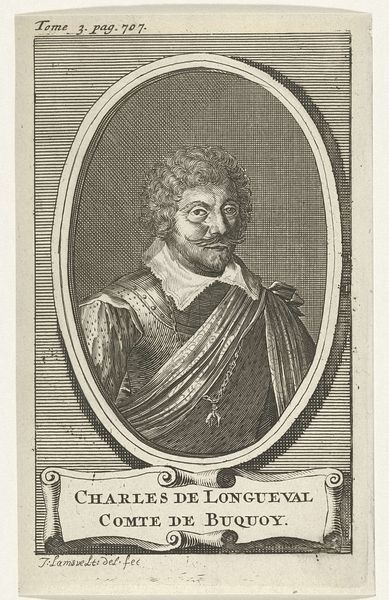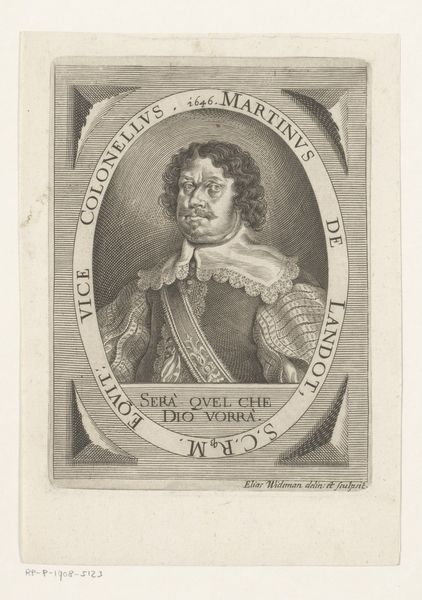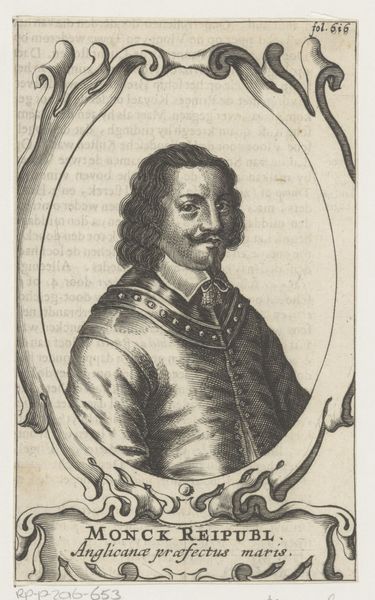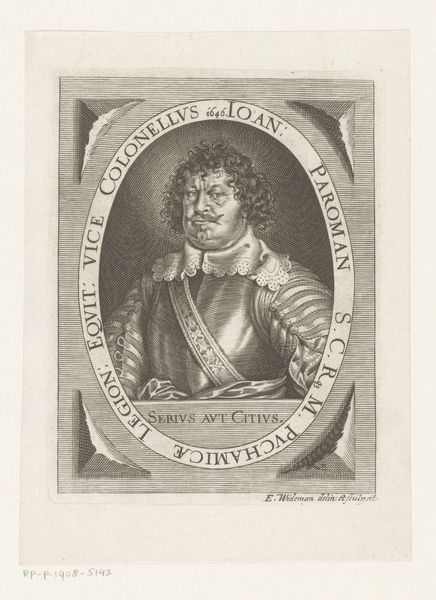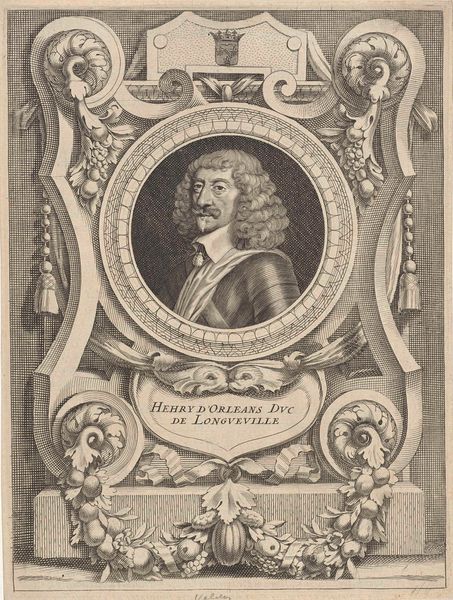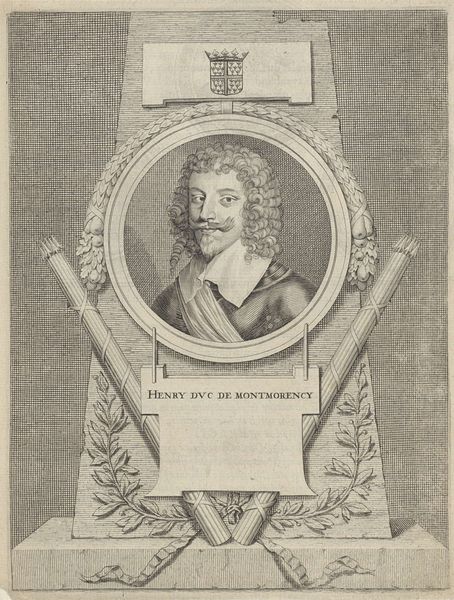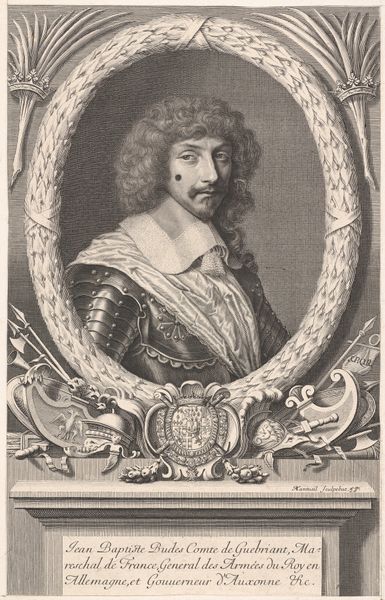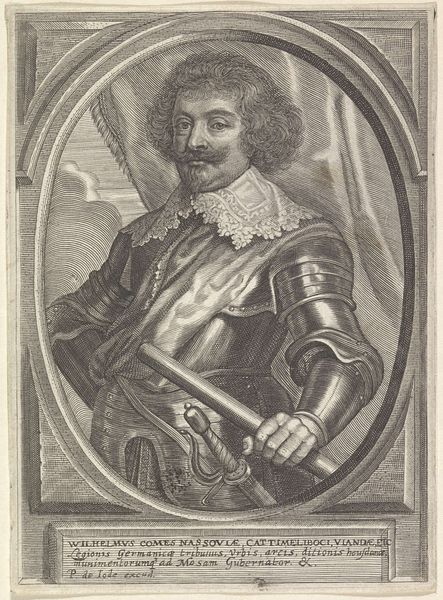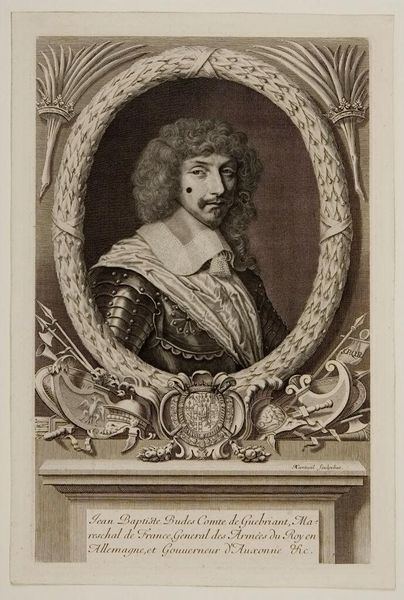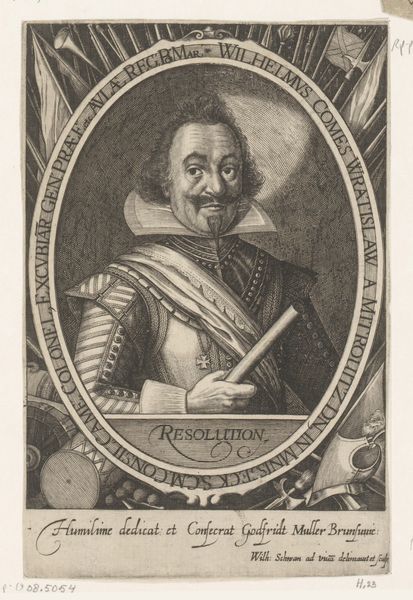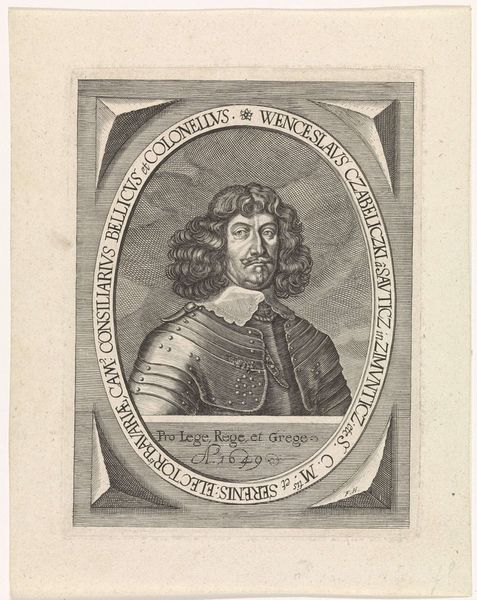
Portret van Karel Bonaventura van Longueval, graaf van Bucquoy 1606 - 1669
0:00
0:00
engraving
#
portrait
#
baroque
#
pen drawing
#
pen illustration
#
old engraving style
#
line
#
pen work
#
history-painting
#
engraving
Dimensions: height 137 mm, width 91 mm
Copyright: Rijks Museum: Open Domain
Curator: Immediately, I'm struck by the stark contrast and delicate linework of this piece. It's unsettling, somehow severe despite its ornamental quality. Editor: This is an engraving depicting Karel Bonaventura van Longueval, Count of Bucquoy. It's attributed to Louis Spirinx and dates to sometime between 1606 and 1669. As you noted, the medium creates quite a dramatic effect. Curator: Indeed, the Baroque style is evident, not just in the ornamental cartouche and cherubic figures framing the portrait, but in the subject’s own elaborate attire and confident gaze. It's meticulously constructed. The dense cross-hatching that creates shadows – masterful. Editor: Consider Bucquoy himself. He was a significant military figure in the service of the Habsburgs. The engraving likely served a very specific propagandistic purpose – bolstering his image as a noble and capable leader. The text beneath his portrait, though hard to read, surely reinforces his titles and achievements. Curator: It reads, "Knight of the Golden Fleece, commander of the armies… counselor in war." It situates him firmly within a powerful network of authority and influence. The formality, though, is disrupted by those somewhat grotesque faces leering from the cartouche. It almost hints at the cost of power, wouldn't you say? Editor: Possibly, but these images, what strikes me more is their functionality. How images in this time functioned. As historical documents, of course, yet also objects imbued with status and meant for broad dissemination. Portraits like this one helped to solidify the Count's position and disseminate his power visually across various social strata. Consider the power this image would wield even in towns who did not get to know him. Curator: It's a potent reminder that even seemingly straightforward portraits can be layered with complex artistic choices and historical significance. Editor: Yes, this piece invites us to analyze not only its artistic qualities but also the social and political contexts in which it was produced and circulated. What did its existence serve in the long term for historical memory, one wonders.
Comments
No comments
Be the first to comment and join the conversation on the ultimate creative platform.

